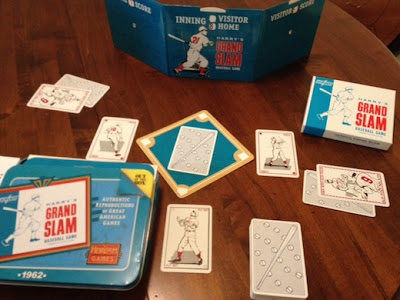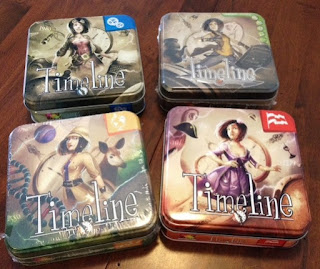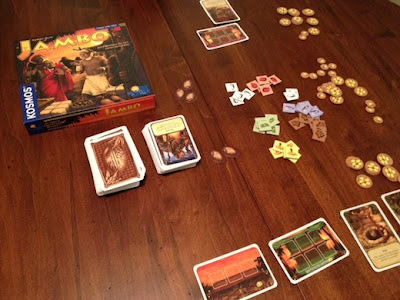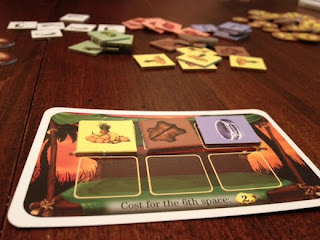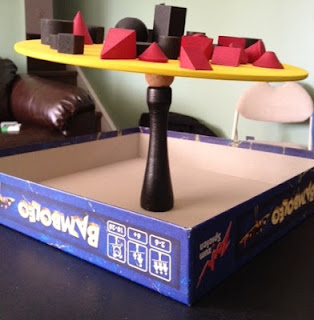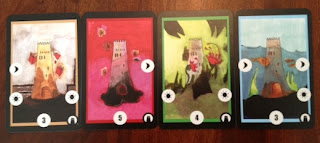A game that I have had the opportunity to play a few times recently after much hype is
Android: Netrunner (or, Netrunner, for short), one of the newest living card games from Fantasy Flight. Just for fair warning, Netrunner is a fairly involved game, so the rules overview will skip
a lot of the smaller rules.
Netrunner is a two player game in which one player plays the "Runner" and his opponent plays the "Corporation." Both players are attempting to score seven points from agendas. The Corporation scores them by playing them and advancing them to completion, whereas the Runner scores them by stealing them - either stealing them from the Corporation's deck, discard pile, hand, or in play area. In order to protect their agendas (and other cards), the Corporation can install "Ice." Ice defends any server from the Runner. However, to counter Ice, the Runner can play Icebreakers. On his turn, the Corporation can draw cards, gain money, install cards, play cards, and advance cards (like agendas). On the Runner's turn, he can do similar things (other than advancing cards), but he can also make a "run." Making (and defending) runs is the crux of the game. When the Runner decides to make a run, he first chooses the target. Then, he encounters each piece of ice on that server, and if the piece of Ice is face down, the Corporation has the option of "rezzing" the Ice (turning it over). Only rezzed Ice gets in the Runner's way. During his run, the Runner will use Icebreakers to get through his opponent's Ice. However, most Icebreakers are initially weaker than Ice. Therefore, the Runner will have to use "credits" (money) in order to increase the size of his Icebreaker; and he will also have to use credits in order to break each of the "subroutines" (bad things that would happen) on the Ice. If he successfully gets through all of the Ice on that server, then the run is successful - and thus he gets to steal any cards that he can now access. On a "remote server" he can access the single card that was installed. On other servers, he can access the entire discard pile, a random card from the Corporation's hand, or the top card from the Corporation's draw pile. The first player to score seven agenda points wins!
 |
| The Runners in the base game |
The first pro for Netrunner is that it is beautifully asymmetric. I have played a lot of games, and many of them have some element of asymmetric gameplay. Often this takes the form of slightly different rules, different starting positions, and different victory conditions. However, Netrunner blows that completely out of the water. In Netrunner, there is nothing that is shared. The two sides have different inherent strategies, play cards differently, and are the counter of each other in every way. Whereas this makes the game a bit hard to teach, it is done so beautifully that the time spent learning the game definitely feels like a worthy investment. I still struggle to wrap my mind around how you would create a game where the sides are this diverse and yet make it balanced for both sides. Bravo.
The next pro for Netrunner is that I think the secret information in the game adds an interesting suspense. Though, specifically, it is primarily the Corporation that is hiding information from the Runner. Between the different pieces of Ice that are not yet revealed and the different cards installed on remote servers, the Runner must make a lot of decisions based on limited information. This also adds a bluffing element to the game. The Corporation may create a remote server that is highly protected by Ice and then put a non-agenda card in it (unrevealed) in order to get the Runner to focus a lot of effort on it (thinking that it is an agenda). More so, the Corporation even has some trap cards that are allowed to be advanced, and thus it will look exactly like an agenda until the Runner has some way of seeing it - either by playing a card that exposes it, or by making a successful run against it. But, a successful run against one of these traps will probably be very harmful to the Runner.
A third pro for Android Netrunner is that I like that nothing is safe (well, unless it is highly protected by Ice). A Runner is allowed to target any cards the Corporation has, aside from scored agendas. Specifically, the Runner can target your hand, your discard pile, your draw pile, and any card that you install on your side of the board. Thus, you can never have an agenda that the Runner
can't steal - all you can do is hope to protect it enough (or bluff well enough) that he doesn't manage to steal it before it is completed. I also like that the runs can be helpful ("the runs can be helpful" - yes, maybe I have the mind of a teenager, but that makes me chuckle; ah, bathroom humor) even without finding an agenda. The Runner has the option of trashing any card that he finds, if he is willing to pay the trash cost for it. This is a good (but expensive) way to counter what the Corporation may be planning.
 |
| Icebreakers ready to go |
I could probably list off several more pros, but let's get to an important point of note and then a couple of cons. First, the point of note - the Runner is very reactionary, whereas the Corporation is very defensive. If you tend to strongly prefer one of these strategies over the other in games, then you should know that you will probably have a favorite side to play. Specifically, the Runner is always trying to make runs to have a chance of stealing agendas. His turn will be easier or harder depending on how well the Corporation has defended his servers. His success in scoring points is also dependent on the Corporation - because if the Corporation never draws agendas, then the Runner can never score (granted, neither can the Corporation). Conversely, the Corporation's entire goal is to defend. It is in his best interest to have a lot of ice on every server. The more heavily defended that the Corporation can be, the more likely that he will have time to advance his played agendas to completion - and thus the higher his chances of victory.
Now for the cons of the game. Both of the cons will be related to the Corporation drawing agendas. First, the entire pace of the game is set by the frequency with which the Corporation draws agendas. If they are all at the beginning, then the game will be very fast and hectic. However, if all of the agendas happen to be on the bottom of the deck, then the game can really start to feel like it is dragging quite a bit as the Runner is making (possibly successful) runs, but they all seem pointless. Even as the Corporation, not drawing agendas for a long time can start to feel boring, as you're constantly setting up defenses (which is good for you), but you can start to feel like you are stalling.
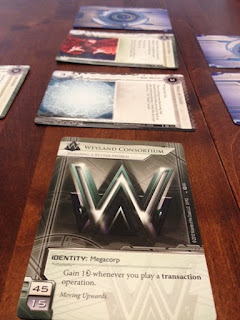 |
| Highly protected Corporation HQ |
This leads to the second con which is that the frequency of the Corporation player drawing agendas can highly favor one player over the other. Now, yes, most card games have a luck of the draw element, and Netrunner does as well where each player hopes to draw their best cards, but that's not what I mean. Netrunner is unique in that the draw of
one of the two players will help determine who is "luckier". If the Corporation player draws a lot of agendas early, this highly favors the Runner - the Runner is able to make a lot of runs before the Corporation is able to setup a lot of defenses, and has a much higher chance of stealing an agenda. Whereas, if the Corporation draws a lot of his agendas near the bottom of the deck, then this highly favors the Corporation - he can setup a large number of defenses and have them all in place before the Runner has the opportunity to gain anything useful; plus, the Runner quite possibly will have used many of their best cards on making successful runs earlier without scoring any points. I think that this is a very strange dynamic of Netrunner - but the best games of Netrunner seem to be when the Corporation's agendas are evenly distributed throughout the deck.
Overall, I give Android: Netrunner an 8.5/10. It is a really fun game, and I'm glad that I got to invest the time to play it several times. However, since it is a living card game, I must decide whether I'm going to continue with this franchise or not. I currently have three other living card games that I prefer over Netrunner (
Lord of the Rings,
Game of Thrones, and
Star Wars) and so I will probably not to continue investing in this one.
If Netrunner sounds interesting, you might also check out
Mage Wars,
Glory to Rome, and
Star Wars: Customizable Card Game.

